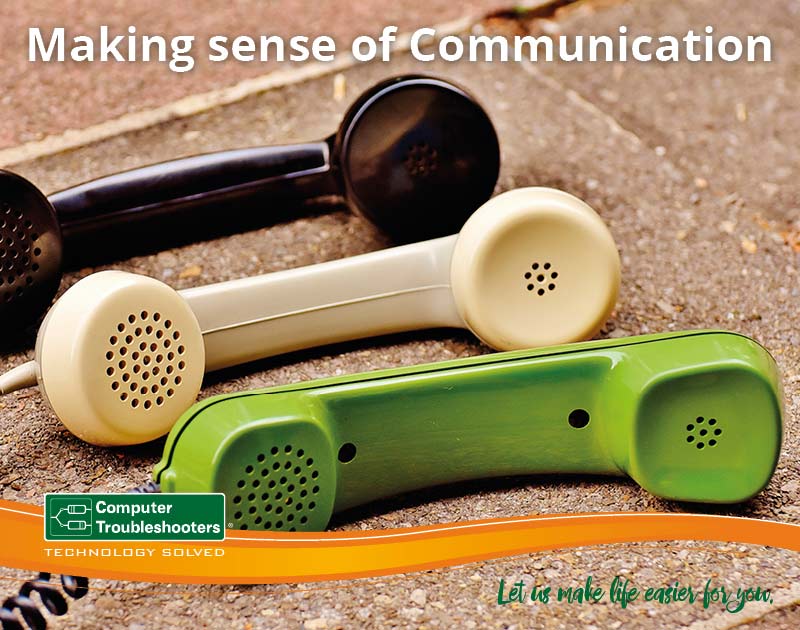Making sense of Communication Solutions for Small business
In today’s connected business environment communication solutions are more critical than ever, yet deciding on what system, which technology, which provider is very difficult due to the variety and mix of solutions that are available. This article looks at assisting a business in navigating this very complex and difficult decision.
What is the starting point?
This is the easy part start with documenting what it is you require by analysing the business environment that you operate in. Sounds simple enough but it is often overlooked or not completed. This is where you will gain a clear picture of your requirement and your needs.
Some of the factors/questions that need to be looked at are: how does your business interact with customers? Do you have a dedicated team undertaking outbound activities, do you run a support centre? How big is the sales team? Is the sales team office based or mobile? How many calls will be active at any point in time? How many locations are employees located at? Do you have any compliance issues? What is the expected new numbers of employees next 12 months, 24 months? What level of integration is required across your systems and technologies? E.g. CRM System.
The above list is by no means exhaustive but it does start to provide a guideline for what is needed to consider in defining the requirement.
What are the key factors in evaluating a solution?
When evaluating a solution, the key criteria will cover Cost both initial investment and ongoing monthly recurring costs, Quality i.e. sound voice quality, including reliability of connection and speed, Ease of implementation i.e. level of training required, feature functionality, level of support provided and Adaptability being the ability to scale with expansion or contract if required.
Understanding your requirement by documenting it enables one to better identify the key criteria by which every solution can be rated and evaluated. This process enables an effective decision to be made.
Considerations
Cloud Based Phone System V Traditional Physical Phone systems
Cloud phone systems have been heralded as the future of business communications. A cloud based system is simply a service that delivers calls and PBX -style functionality over an internet connection (Voice over Internet protocol VOIP)
Traditional phone system is based around a copper landline that is serviced by a telephone company such as Telstra. Typical equipment required includes an on-premise PBX hardware that may need to be upgraded as your employee numbers grow past the capacity of the PBX hardware you have purchased.
Feature comparisons between Traditional and Cloud Based systems
Both traditional and Cloud based phone systems have extensive functionality that will meet many business needs. Some people consider that there is greater programming capability with a VOIP system and less capital investment is required with VOIP solutions. My comment is that you need to ensure you have a solution that gives you the features you need now and in the next five years. You do not want to be changing phone solutions every 3 years. That is a very expensive exercise.
Speed of deployment/ Business Interruption
When assessing which system to purchase ensure that you have identified how much time is required to install and deploy the system as it is a key to minimizing the disruption to a business. Every minute a business is not available to conduct business the greater the impact on overall viability of the business.
Bandwidth/Internet Connection
A VOIP system requires a broadband connection and the more simultaneous users using the system means more bandwidth is required. Check to see if your Internet Service provider has a bandwidth cap in place and check the data usage regularly so you do not exceed the cap. Exceeding the cap is going to impact quality.
Final Thoughts
As a small to medium business you need to decide for your communication systems that is right for the business. A Computer Troubleshooters Service provider can assist you at all stages of the process of implementing a phone communication system. This is from the initial selection to implementation and ongoing support.
While there are many positives in implementing a VOIP system remember no matter what solution you choose there is always positives and negatives the final decision should always be based around the objective criteria you have defined.
VOIP Phone Systems
Advantages
Sophisticated, Easily set Up and configured, Cost, Easy to scale, Expansive Features, Comparable call quality to landlines, No investment in hardware PBX, Soft calls receiving calls via your desktop or laptop.
Concerns
Provider response times, Extent of support, Dependence on provider, Educating staff in the system, System Software upgrade disruptions, Availability of Bandwidth, Reliability of provider network, Power outages.
In conclusion, The Australian Communications and Media Authority (ACME) reported in 2014 (Australian SME’s in the Digital Economy 5-6) “that cloud services continue to gain acceptance and popularity with small and midsized businesses.”
The move to VOIP Unified Communications will continue and your local Computer Troubleshooter is there to help you make the right decision.






